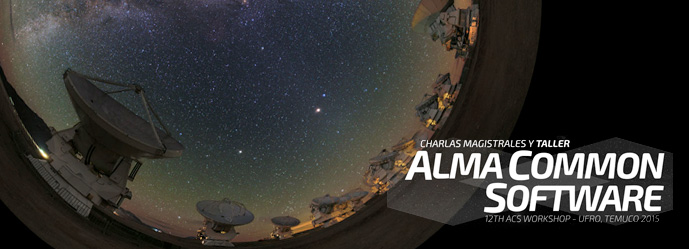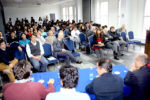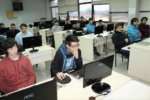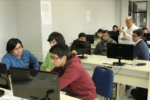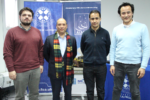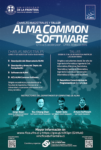ALMA teaches its operating software to future engineers at UFRO
Moving an ALMA antenna or monitoring its alarm system are just a few of the many tasks carried out as a result of applications developed using a single technological infrastructure known as ALMA Common Software (ACS). In use for more than 15 years, this is an open-source platform that contains all of the observatory's libraries, functions and services and has already been used by other astronomical projects.
With the mission of training future astro software engineers, ALMA experts visited the southern Chilean city of Temuco to present a series of talks and give a 3-day workshop to students on different career paths at the School of Engineering and Science of Universidad de La Frontera (UFRO).
"The ACS platform is a tool that has evolved over time, and these workshops - now in its 12th edition - have helped to generate a global community of developers who have contributed to making it even better," indicates Jorge Ibsen, Head of ALMA's Computer Department. "These workshops enrich the professional education of their participants, who in many cases have ended up working on astronomical projects."
The ALMA Common Software (ACS) workshops began in 2004, when construction of the largest radio telescope in the world in northern Chile was underway. Since then, workshops have been held in many different institutions and universities around the world, some of them Chilean, but this is the first workshop held in southern Chile. This is the outcome of a memorandum of understanding signed last year between ALMA and UFRO
 "This memorandum and the knowledge transfer between ALMA professionals and researchers at Universidad de La Frontera has resulted in new lines of research in the field of Astro-engineering, Science and Technology," says the Dean of the School of Engineering and Science, Cristian Bornhardt. "With the joint development of this type of activity, we are able to offer new and valuable opportunities to support our students' education in areas that are of utmost importance to the country's strategic development."
"This memorandum and the knowledge transfer between ALMA professionals and researchers at Universidad de La Frontera has resulted in new lines of research in the field of Astro-engineering, Science and Technology," says the Dean of the School of Engineering and Science, Cristian Bornhardt. "With the joint development of this type of activity, we are able to offer new and valuable opportunities to support our students' education in areas that are of utmost importance to the country's strategic development."
This workshop addressed the main characteristics; functions and potential offered by this software infrastructure especially designed to monitor and control the radio telescope. It included the implementation of a toy model of what the observatory does using ACS.
 "The impact of the observatories installed in Chile goes beyond astronomy; it permeates the engineering needed for day-to-day operations," says Jorge Ibsen, who led the talks and workshops in conjunction with Tzu-Chiang Shen and Rubén Soto, ALMA software group managers, and Arturo Hoffstadt, ALMA software engineer.
"The impact of the observatories installed in Chile goes beyond astronomy; it permeates the engineering needed for day-to-day operations," says Jorge Ibsen, who led the talks and workshops in conjunction with Tzu-Chiang Shen and Rubén Soto, ALMA software group managers, and Arturo Hoffstadt, ALMA software engineer.
 To facilitate the implementation of educational activities and software development in the area of astro-engineering, ALMA donated 10 servers to the School of Engineering and Sciences at Universidad de la Frontera.
To facilitate the implementation of educational activities and software development in the area of astro-engineering, ALMA donated 10 servers to the School of Engineering and Sciences at Universidad de la Frontera.
More information
ALMA is a partnership of ESO (representing its member states), NSF (U.S.) and NINS (Japan), along with NRC (Canada), NSC and ASIAA (Taiwan), and KASI (South Korea), in cooperation with the Republic of Chile. The Joint ALMA Observatory is operated by ESO, AUI/NRAO and NAOJ.
 Contact:
Contact:
Valeria Foncea
Education and Public Outreach Officer
Joint ALMA Observatory
Santiago, Chile
Tel: +56 2 467 6258
Cell: +56 9 75871963
Email: [email protected]
